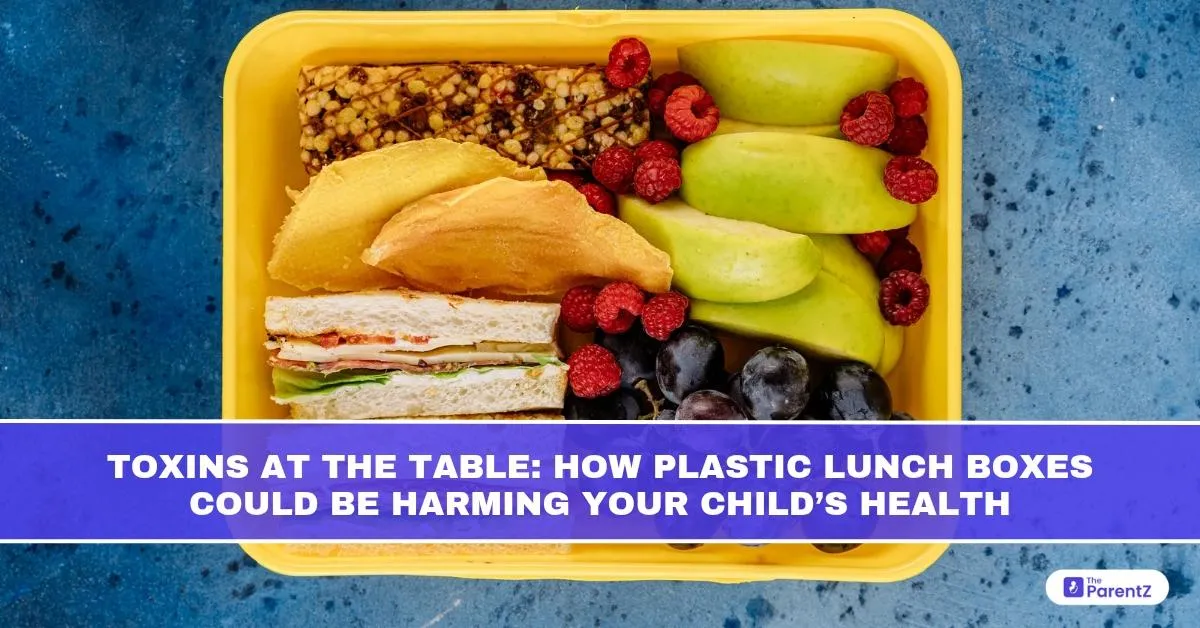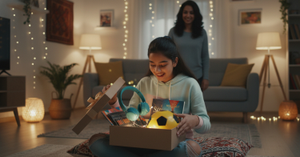“We all want the best for our children but sometimes, danger hides in the most ordinary things.”
Lunchboxes are more than containers. They carry a part of home, love, and care to school each day. But what if the very box that holds your child’s meal is leaching toxins into their food? As parents, we’re often careful about nutrition but the material that carries that food also matters deeply.
The Hidden Chemicals in Plastic
Many plastic lunch boxes, especially older or cheaper varieties, contain chemicals that may disrupt hormones or affect long-term health. The primary culprits include:
1. Bisphenol A (BPA)
BPA is a synthetic compound used in the production of polycarbonate plastics. Though banned in baby bottles in many countries, it’s still found in some lunch boxes and containers.
Why it matters:
BPA can mimic estrogen in the body, potentially disrupting your child’s endocrine system. Studies have linked BPA exposure to:
- Early puberty
- Behavioral issues
- Obesity
- Risk of diabetes and heart disease in adulthood
2. Phthalates
These are plasticizer substances added to make plastic flexible and durable. Phthalates aren’t chemically bound to the plastic, so they can easily leach into food, especially fatty or warm meals.
Why it matters:
Research suggests phthalates are associated with:
- Hormonal imbalances
- Poor attention span or learning difficulties
- Allergies and asthma
- Disrupted reproductive development
3. Lead and Cadmium
Some colored plastics or printed designs on lunch boxes may contain heavy metals like lead or cadmium, which are toxic even in tiny amounts.
When Does Plastic Become Riskier?
Plastic isn’t uniformly dangerous, but the risk increases based on usage patterns. These are key risk factors:
- Heat exposure: Warming food in plastic containers or placing hot food directly into plastic boxes increases leaching.
- Scratches and wear: Old, scratched, or damaged lunch boxes release more chemicals.
- Oily or acidic foods: These increase the chances of chemical migration into the food.
- Microwaving or dishwashing: Both can degrade plastic faster and increase toxin release.
Real-life Case: A Parent’s Worry Turned Insight
Meena, a mother of two from Pune, switched to trendy printed plastic lunch boxes for her kids. Her daughter began complaining of frequent stomachaches. On visiting the pediatrician, Meena was advised to eliminate plastic from food storage. Within weeks of switching to stainless steel and glass, the complaints vanished. “It never occurred to me that something so colorful and child-friendly could be the problem,” she said.
How These Toxins Affect Children More
Children are especially vulnerable to chemical exposure because:
- Their bodies are still developing
- They eat more food relative to their body weight
- Their detoxification systems (like the liver and kidneys) aren’t fully matured
Even low doses of hormone-disrupting chemicals during key growth periods can have lifelong impacts.
Safe Alternatives to Plastic Lunch Boxes
Fortunately, there are many safe, affordable, and child-friendly alternatives:
Stainless Steel Lunch Boxes
- Durable, non-reactive, and toxin-free
- Keep food warm longer
- Dishwasher safe
Silicone Containers
- Food-grade silicone is free from BPA, phthalates, and other harmful chemicals
- Flexible and colorful like plastic
- Safe for both freezer and microwave (if marked)
Glass Containers (with protective sleeves)
- Excellent for older children or for reheating food
- No risk of leaching, even with hot or oily meals
Quick Tips for Parents: Reducing the Risks
- Check the recycling number: Avoid plastics labeled 3 (PVC), 6 (PS), and 7 (Other). Prefer 1, 2, 4, or 5.
- Avoid heating plastic: Never microwave food in plastic containers.
- Replace old or scratched boxes: They leach more chemicals.
- Pack hot food separately: Use insulated stainless steel thermos jars.
- Buy from reliable brands: Look for certifications like “BPA-free”, “food-grade”, or ISI-marked in India.
What Doctors Say
According to Dr. Rina Shah, a pediatrician in Mumbai, “Most parents focus on what’s in the lunchbox, but not on the lunchbox itself. I always advise using stainless steel or good-quality food-safe materials. It’s a small change with long-term benefits.”
Conclusion: A Safer Tomorrow Starts Today
You don’t need to overhaul everything overnight. Start small. Replace one plastic container at a time. Talk to your child about why you’re making the switch; it can empower them to make healthier choices too. After all, a lunchbox should nourish, not harm. By choosing safer options today, we protect not just their meal but their future.








Be the first one to comment on this story.